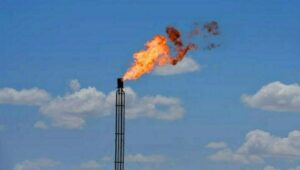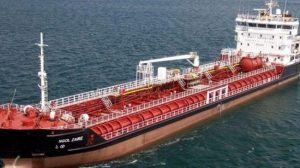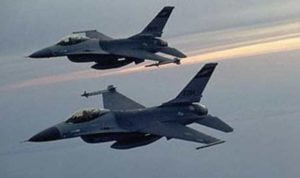PSX may hold 7-8 IPOs in 2019, says Shahid Ali Habib
5 min read
KARACHI: The Pakistan Stock Exchange may hold at least 7-8 Initial Public Offers (IPOs) in 2019 as there would be stability in the exchange rates of local currency, political front, and International Monetary Fund (IMF) loan deal with government of Pakistan, said Shahid Ali Habib, Chief Executive Officer (CEO) of Arif Habib group.
“As the market is also expected to post a healthy run during 2019 on the back of improving macros and political stability, companies are expected to resume/initiate IPOs,” he claimed. The IPOs may come from steel, power, transport, textile, logistic, auto parts, Pharma, food, IT sector and consumer etc, Mr Habib said in a media briefing during launch of its ‘Pakistan Investment Strategy 2019’ here on Tuesday.
During the past five years, Rs 236 billion were raised from the IPOs. Over the past decade, IPOs, secondary Public Offerings (SPOs), and Secondary Equity Offerings (SEOs) remained a major source of fund raising and capital formation for companies, he said adding over the past decade, Rs 255 billion has been raised from the market, while more importantly, Rs 236 billion has been raised during past five years, he claimed.
Interloop which is the largest socks manufacturer outside China, intends to issue 109 million shares at a floor price of Rs 45/share to generate Rs 4.9 billion in order to establish a hosiery division and set up a new denim plant. Pakistan largest ever private sector IPO in expected to be launched in 2019, he claimed.
This signals the importance of the stock exchange as a preferred choice for raising capital in the country, Shahid Ali Habib said.
Government has been the biggest beneficiary of these offerings as it has raised Rs 170 billion through 4 SPOs including UBL, HBL, ABL and PPL, which is approx. 67 per cent of the total proceeds.
He said that 2018 was an election year, and therefore political uncertainty was prevalent. With elections being peacefully concluded and smooth democratic transition taking place along with settling in of the new government, 2019 is expected to be stable year in terms of political environment.
He claimed that higher interest rates are expected to encourage issuers to go for equity offering as cost of debt has increased significantly as a result of higher discount rate (hike of 425 basis points during 2018).
On the other hand, he said the valuations will drop as a result of higher return on debt, which is an alternate investment avenue for investors.
According to him textile sector is expected to offer more IPOs as it benefits from government’s focus on exports, Pak-Rupee devaluation (20 per cent in CYTD), fiscal incentives and concessionary energy pricing (gas and electricity). Although the textile sector has access to low cost financing in terms of Long term Financing Facility (LTFF) and Export Financing Scheme (EFS) for capacity expansion and working capital, respectively, not all kinds of expenditures (like cost of construction, machinery erection, commissioning etc.) are covered in those schemes.
E&Ps to Lead Earnings Growth:
During 2018, earnings growth arrived at 8.6 per cent led by 28 per cent growth in the E&P Sector on the back of 19 per cent higher oil prices. The heavy weight banking sector is expected to show a negative growth of 3.8 per cent primarily as a consequence of drastic reduction in large banks’ profitability. The cement sector has witnessed a decline of 3.6% amid initiation of price war amongst cement companies and their inability to completely pass on the impact of higher coal prices (+47% YoY) resulting in lower gross margins (down by 785bps).
Samiullah Tariq Director research of Arif Habib Limited said, “we project an uptick in earnings of KSE-100 to a 5 year high of 15.2 per cent in 2019 on account of 35.9 per cent uptick in E&Ps and 32 per cent uptick in Banks, which are two of the highest weighted sectors in the PSX (weight of 15.1 per cent and 25.2 per cent, respectively). The growth estimates for E&Ps is premised on the assumption of higher dollar parity (Rs 147/USD end June 2019) along with assumption of Arab Light oil prices at an average of $65/barrel in 2018-19. Whereas, higher profitability of the banking sector is expected due to realization of lagged impact of 425bps increase in policy rate during 2018.
Corporate earnings are expected to increase by 15.2 per cent, which is a 5-year high, on the back of growth in profitability of the E&P sector, owing to 17 per cent average Pak-rupee depreciation and 4.5 per cent higher oil price ($65/bbl for 2018-19 compared to $62.2/bbl in 2017-18.
PSX index may cross 47,000 pts:
KSE-100 Index is expected to cross 47,000 points by December 2019.
Balance of Payments Sustainability to increase investor confidence:
Uncertainty regarding Balance of Payments and Foreign Currency Reserves is one of the major reasons for lagging performance in prior year of KSE-100. Lower Current Account Deficit ($600 million monthly from January 2019 onwards) along with arrangement of funds from IMF and friendly countries including China, UAE and Saudi Arabia are expected to brighten investor mood.
Rectification of overvalued currency to lure Foreign Portfolio Investment:
The Pakistani Rupee remained significantly overvalued in terms of Real Effective Exchange Rate (REER) from 2014 till 2018 (between 110-124). After the most recent devaluation on November 30, 2018 from Rs 134/USD to PKR 139/USD, we estimate that the REER has come down to 105.
Historical data suggests that FIPI has been positive in years when REER was below 100 and FIPI outflow has been witnessed during years when Pak rupee was overvalued using REER.
Market Trading at a discount to Historical and Regional PE multiples:
KSE-100 index is trading at a 2019 PE of 7.6x, which is lower than 7-year average PE of 10.3x and the lowest in any of the past 7 years, showing significant room for growth. Historical data suggests that the market had sustained higher PE’s in unfavorable macroeconomic conditions in 2013-2014 era.
At present, the market vis-àvis the region, is trading at a 39 per cent discount compared to historical average of 36 per cent.
Market is trading at attractive multiples despite better macros:
KSE-100 Index is trading at 7.6x 2019 earnings despite having higher GDP growth of 4 per cent compared to 2012, while the major economic problem of the Current Account Deficit is expected to improve significantly in 2019.







